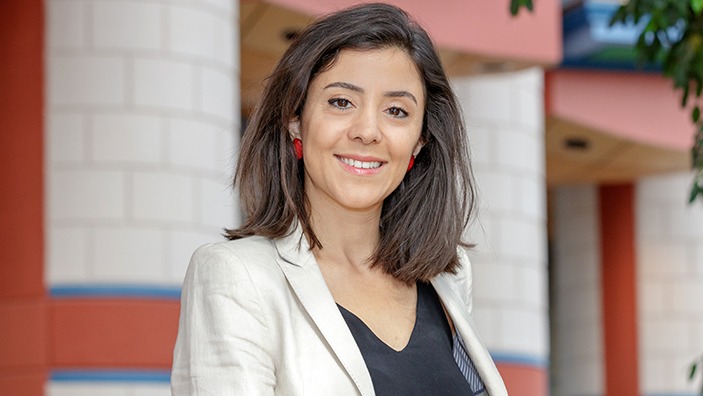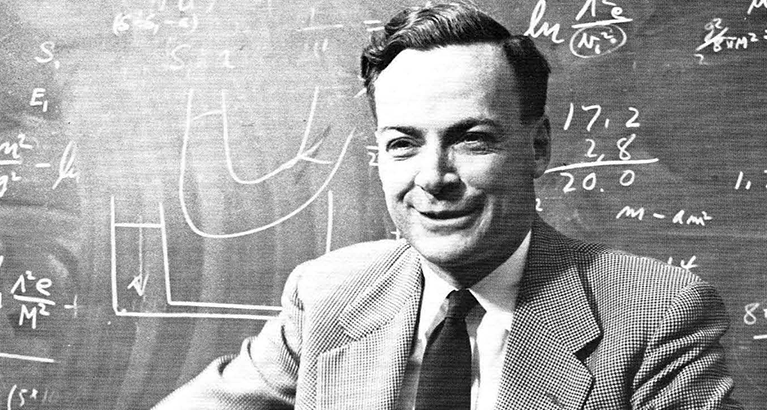
At first glance, Nobel Prize-winning scientist Richard Feynman might seem an unusual focal point for a pathway toward greater gender equality. His relationship with women has been critically analysed, sparking discussions and controversies. This led to a re-evaluation of his legacy in more recent years, particularly as societal norms around gender and power dynamics have thankfully progressed.
Yet the Nobel Prize winner’s mid-20th century Path Integral formulation holds a compelling approach to use mathematics to help narrow the gap between opportunities enjoyed by men and women in the 21st century.
Feynman’s breakthrough helps deal with inherent uncertainty
Feynman’s 1948 path integrals, a cornerstone of quantum mechanics, revolutionised the way physicists understand the behaviour of particles. Put simply, it proposes that instead of a single, definitive path, particles traverse an infinite number of possible trajectories simultaneously.
It quantifies the probability of an event (like a particle moving from point A to point B) by summing up all possible paths between these points while assigning a probability factor to each path.
It’s a way of dealing with the inherent uncertainty and multiple potential paths that particles can take in the quantum physics realm, and befits the idea that quantum mechanics is a ‘many-worlds’ theory involving considering all possible histories. The formulation allows for the calculation of quantum phenomena with remarkable precision, and the technique has since been used in areas ranging from understanding polymers like plastics and cellulose to protein folding that produces new protein properties. It also underlies many of the computations to predict the outcome of a collision at the Large Hadron Collider at CERN.
Applied to gender inequality, also an inherently complicated and convoluted problem, path integrals can help conceptualise complex issues in a more tangible way potentially leading to innovative solutions.
From the atomic bomb to accusations of sexism
Feynman had a role in the Manhattan Project that developed the atomic bomb (as reflected in the Oscar-winning film Oppenheimer). He was a brilliant man, clearly, whose hobbies included safecracking and bongo drumming, yet one accused during his lifetime (1918-1988) of sexist behaviour toward women as reflected in some of his own comments in the 1985 memoir Surely You’re Joking, Mr Feynman!, based on recorded conversations.
So why was I drawn to Feynman’s theory as a route towards greater gender equality?
The United Nations Gender Social Norms Index1, covering 85% of the global population, finds that nearly 9 out of 10 men and women hold fundamental biases against women. A recent World Bank report2 found that women globally earn 77 cents for every $1 paid to men, and when legal differences are taken into account women enjoy fewer than two-thirds the rights of men.
As in physics, the sum of all parts can play a gender equality role
Just as in Feynman’s formulation that no single definitive path between 2 points in space and time is exclusively responsible for a particle’s behaviour, no single intervention can solve gender inequality. Instead, it’s the coherent sum of all paths – each with its own unique contribution – that will shape the outcome.
To apply the path integral framework, one first needs to identify the initial and final state, then identify the possible pathways between them. The next step is to assign a probability amplitude to each path (which tells you how likely a particle is to travel that path), and then sum up all amplitudes – an integral of all paths.
Guided by this analogy, I consider the initial state to be our current state, and the final state is the one we aspire to (gender equality). We then have to identify the possible pathways between those 2 points. While the various pathways to gender equality can be debated, for demonstration let’s assume 5: policy reforms, mentorship programmes, flexible working conditions, awareness campaigns and educational reforms.
Quantifying the contribution of each pathway
Now the challenge becomes: how do we quantify the contribution of each pathway?
To each of these pathways, I consider 2 main factors affecting its contribution to the final outcome – impact and feasibility. To each of those, I assign a numerical factor (these are clearly guestimates on my part) from 0 to 1:
- for policy reforms, such as implementing gender quotas for leadership positions, I consider it high impact (assigning it a value of 0.8) with medium feasibility, as some resistance or political obstacles are expected (thus it gets 0.6 for feasibility)
- mentorship programmes get 0.6 for impact and 0.9 for feasibility, as such initiatives are easily implemented with wide acceptance but often with limited and localised effect
- flexible working conditions get 0.5 for impact, 0.9 for feasibility
- awareness campaigns get 0.4 for impact as they work towards long-term cultural change, 0.8 for feasibility
- educational programmes get 0.9 for impact, 0.3 for feasibility as they are a long-term solution with delayed results
Multiplied and then added together, what we get is a sum that represents the cumulative impact of all paths considered in this simplified model. It adds up to 2.15 out of a possible maximum of 5. This anaemic sum illustrates how this issue is a wicked societal problem. This path integral approach, while simplified and only demonstrative in this context, offers a formula and a numerical approach for tackling the problem.
Ways to make gender equality pathways more efficient
It also offers valuable insight. Paths to greater equality through this formalism become more efficient through a number of ways:
1
Increasing impact of each path
This can be achieved by improving their quality and scope. For example, allocating resources for planning and execution, designing evidence-based interventions that are backed by research to target the right groups, and leveraging technology to scale awareness campaigns or mentorship programmes and increase their reach and impact.
2
Increasing the feasibility of each path
Stakeholder engagement (particularly men) in the planning and implementation phases ensures buy-in and support. Working with institutions and governments to gain policy support for initiatives makes them more feasible to implement on a larger scale. Cross-sector partnerships, especially with organisations beyond traditional STEM (science, tech, engineering and mathematics) fields can also bring new perspectives, resources, and audiences to gender equality efforts.
3
Optimising the combination of paths
Looking for synergies between different paths improves impact. For example, awareness campaigns complement policy reforms by creating a supportive culture for change. Maintaining a balanced portfolio of short-term and long-term strategies, while complementing immediate impact with foundational change, also ensures continuous progress across different fronts.
I don’t claim that any of this will be easy, or fast. But given that the United Nations says gender equality will take 300 years at the current level of progress3, applying a quantum physics approach to reducing that time span seems worthwhile and, yes, integral to our dreams of gender equality.
Entrepreneurship Centre
The Entrepreneurship Centre supports the University of Cambridge’s entrepreneurial talent development and commercialisation of new ideas, and enhances the development of management capacity within the Cambridge entrepreneurial ecosystem and beyond.
References
1 2023 Gender Social Norms Index (GSNI): breaking down gender biases: shifting social norms towards gender equality. United Nations
2 “New data show massive, wider-than-expected global gender gap.” The World Bank, March 2024
3 Progress on the Sustainable Development Goals: the gender snapshot 2022. United Nations





